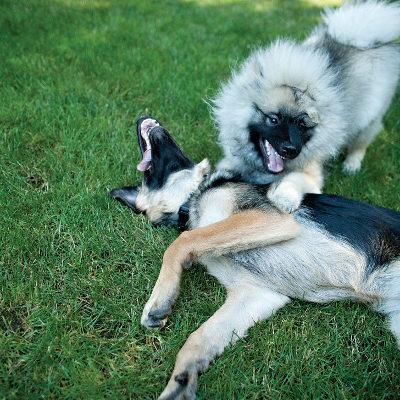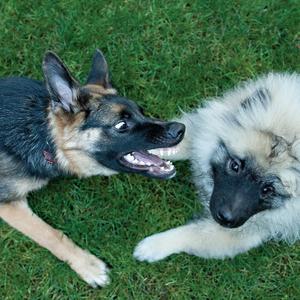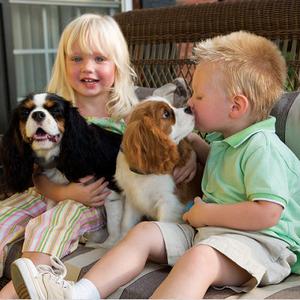What is your dog trying to tell you when you reach for his head and he leans away or pulls his ears back? He's trying to let you know this scares him, but people often overlook these subtle non-verbal cues. Our human world is dominated by verbal communication, but most dog communication involves body posture changes and non-verbal cues. Since fear is at the root of many behavior problems, learning to read your dog's body postures and identifying situations and triggers that cause fear and stress is the first step in helping him.
Start by Avoiding Fear Triggers
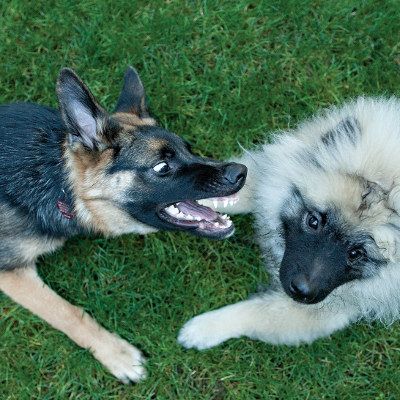 Once you identify signs of fear/stress and the situations that provoke these behaviors in your dog, avoid these triggers as much as possible. This may seem counter-intuitive, but we can't work on introducing the trigger slowly and making your dog feel better about the thing or situation he fears if he's continually stressed by it. How would you feel if I threw a handful of spiders on you in an attempt to cure your spider phobia?
Once you identify signs of fear/stress and the situations that provoke these behaviors in your dog, avoid these triggers as much as possible. This may seem counter-intuitive, but we can't work on introducing the trigger slowly and making your dog feel better about the thing or situation he fears if he's continually stressed by it. How would you feel if I threw a handful of spiders on you in an attempt to cure your spider phobia?
So, if your dog's afraid of fireworks, play white noise or calming classical music to drown out fireworks on New Year's and put him in a room in your house where he is less likely to be able to hear the terrifying noises. If your dog's afraid of strangers, keep a distance from people on walks. The average dog lover will likely be drawn to your cute dog and may even try to pet your dog without your permission, so putting a vest on him that says "give me space" can help. See The Yellow Dog Project for more information.
Training with Treats
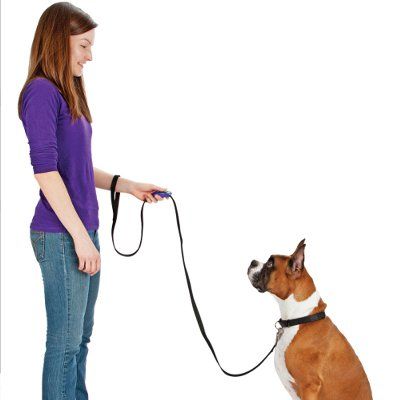 Another program that helps to create structure and predictability for your dog is known as "Nothing in Life Is Free." This program allows people to talk to your dog in his language by asking your dog for a command before he is given anything in life that he wants (i.e., food, petting, putting his leash on, etc). This program also makes your dog more responsive to your commands since he loses the opportunity to earn the reward if he does not follow your command the first time you ask. You need your dog to be responsive to you in non-distracting situations before you can even think of introducing things that scare him.
Another program that helps to create structure and predictability for your dog is known as "Nothing in Life Is Free." This program allows people to talk to your dog in his language by asking your dog for a command before he is given anything in life that he wants (i.e., food, petting, putting his leash on, etc). This program also makes your dog more responsive to your commands since he loses the opportunity to earn the reward if he does not follow your command the first time you ask. You need your dog to be responsive to you in non-distracting situations before you can even think of introducing things that scare him.
If your dog's worried about something when you are present (i.e, fireworks, strangers, other dogs) then teach him to look at you (eye contact command) and/or touch his nose to your hand (hand target) using treats so that he learns to focus on you. You have to teach him these commands in non-distracting situations before you can expect him to perform in the face of distractions and the triggers that cause his fear.
Control Your Dog with Harnesses & Headcollars
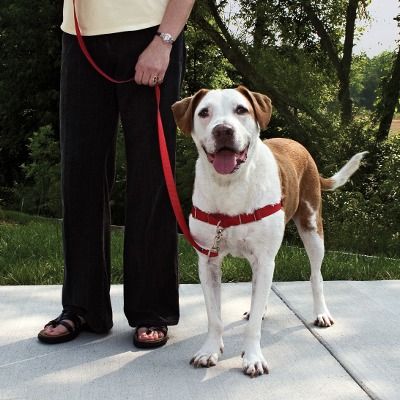 Head collars (i.e., Gentle Leader® Headcollar) or front-attach harnesses (i.e., Easy Walk® Harness) give you more control as you start to introduce your dog to the fearful situations. Having a dog wear a head collar is like having a horse wear a bridle. It would be silly to try to control a 1,000 pound horse with a neck collar, so why try to control a 10 pound Chihuahua using your physical strength?
Head collars (i.e., Gentle Leader® Headcollar) or front-attach harnesses (i.e., Easy Walk® Harness) give you more control as you start to introduce your dog to the fearful situations. Having a dog wear a head collar is like having a horse wear a bridle. It would be silly to try to control a 1,000 pound horse with a neck collar, so why try to control a 10 pound Chihuahua using your physical strength?
Head collars need to be introduced over several weeks by luring your dog's nose through the collar for treats so that your dog has good association with the collar. When introduced slowly you will see that a head collar will really help you to be able to guide your dog's head when you start introducing the scary noise, person, etc.
Keep Your Dog Feeling Comfortable
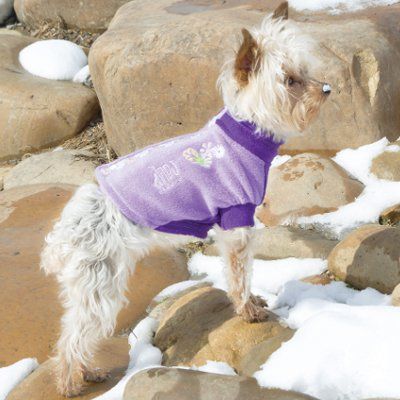 Adaptil™ is the synthetic form of the lactating dog's calming mammary pheromone. It can help to decrease stress in some dogs. It comes as a plug-in (diffuser), spray to spray your dog's bedding or a bandana that he wears around his neck or my favorite, a collar which emits the pheromone for 30 days and goes everywhere your dog goes without having to reapply it every day. If using the spray, allow it to dry for 30 minutes after application since it is alcohol based.
Adaptil™ is the synthetic form of the lactating dog's calming mammary pheromone. It can help to decrease stress in some dogs. It comes as a plug-in (diffuser), spray to spray your dog's bedding or a bandana that he wears around his neck or my favorite, a collar which emits the pheromone for 30 days and goes everywhere your dog goes without having to reapply it every day. If using the spray, allow it to dry for 30 minutes after application since it is alcohol based.
A snug fitting t-shirt or sweater can also help to decrease stress for some dogs. This is similar to swaddling a baby.
Desensitize Your Dog
To address specific triggers of fear and anxiety, exercises can be implemented that reward your dog for remaining calm when the trigger (i.e., person, noise, etc.) is presented at a low level and then gradually increasing the intensity of the trigger (i.e., decreasing the distance, increasing the volume) as long as your dog remains calm and relaxed. You will change your dog's emotional response to the trigger from fearful to happy. This is called desensitization and counter-conditioning.
For example, if your dog is afraid of fireworks, play fireworks noises on a low volume on the computer while asking your dog for the focus commands you have previously taught and rewarding him with a favorite treat. Only increase the volume if he is calm, relaxed, and enjoying the reward.
To make it extra special, use your dog's favorite treat, and don't give it to him outside of these sessions. If your dog starts to display signs of anxiety, aggression or disinterest, then end the session and make it easier for him next time you start. Keep sessions short (2-5 minutes) since this is tiring for you and your dog, but try to make time for sessions 1-2 times per day.
These steps are a great start to help your fearful dog, but some dogs are so fearful or become aggressive warranting expert help. For guidance in creating a specific behavior modification plan for your fearful dog, contact your veterinarian or a veterinary behaviorist. You can find one in your area by going to dacvb.org.

